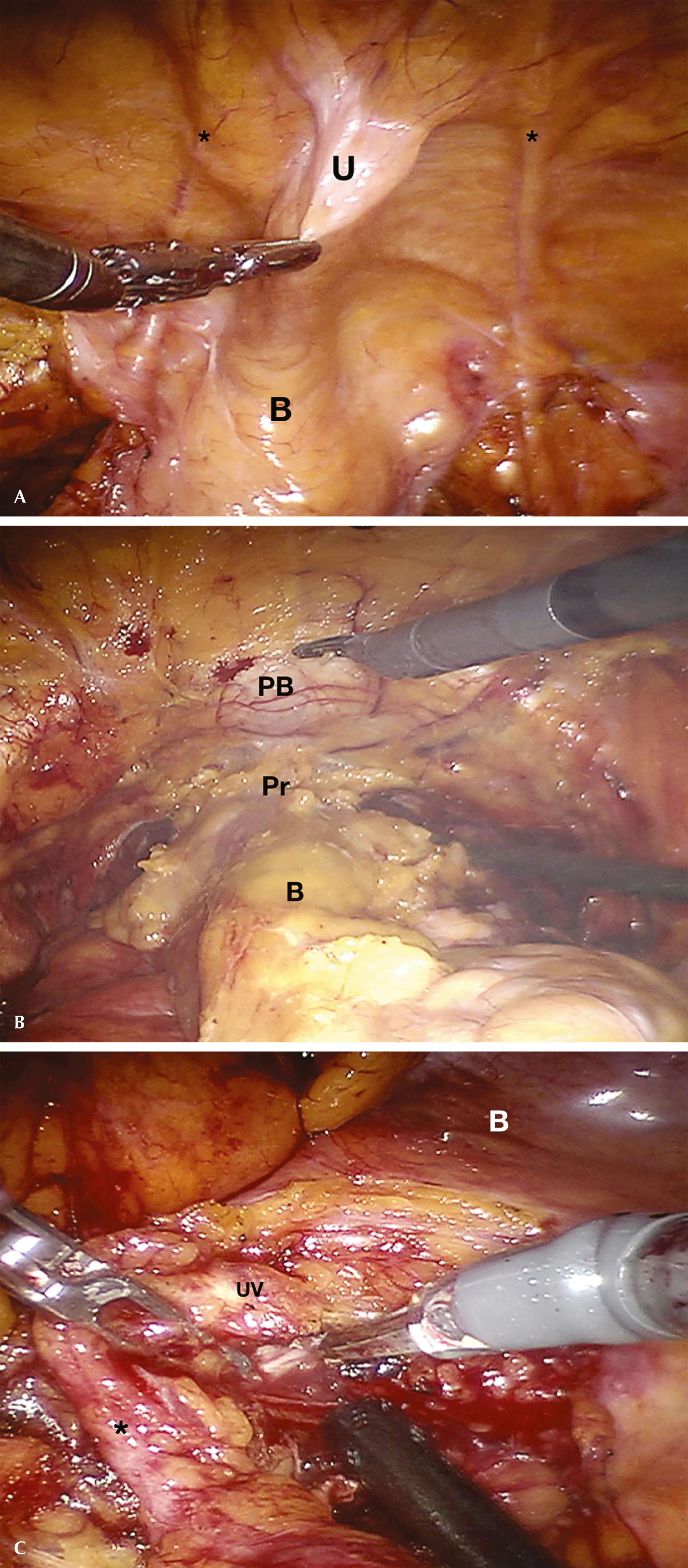Physical Address
304 North Cardinal St.
Dorchester Center, MA 02124
In the United States, bladder cancer is the fourth most common type in men and the ninth most common type of cancer in women. When not muscle invasive, bladder cancer can often be treated with transurethral resections and possible intravesical immunotherapy or chemotherapy with cystoscopic surveillance. For muscle-invasive bladder cancer or for tumors with high-grade features and invasion into the lamina propria (T1) without metastatic disease, radical cystectomy with urinary diversion remains the gold standard treatment. Other indications for cystectomy include refractory disease to intravesical immunotherapy or chemotherapy, and as a palliative procedure for patients with severely symptomatic metastatic or locally advanced bladder cancer necessitating acute hospital care and readmissions.
Pelvic lymphadenectomy is performed regardless of gender. Radical cystectomy in men typically involves the removal of the bladder, distal ureters, prostate, and seminal vesicles. For radical cystoprostatectomy, advances in surgical technique have included nerve-sparing procedures aimed to preserve potency in men and, in selected cases, prostate-sparing procedures. Moreover, techniques for orthotopic bladder substitution have been developed.
In women not seeking a “sexual-sparing” procedure and who have extensive disease, anterior pelvic exenteration is traditionally performed, including cystectomy, salpingo-oophorectomy, hysterectomy, urethrectomy, and resection of the anterior third of the vaginal wall. More recent data have challenged the anterior pelvic exenteration in females and supported a more limited resection in patients without extensive disease, preserving the anterior vaginal wall, uterus, ovaries, and pelvic supporting ligaments, with undoubted benefit on functional outcomes.
Radical cystectomy has traditionally been performed through a low abdominal midline incision, although minimally invasive approaches may now be offered. Although some surgeons are choosing the robot-assisted approach for performing the extirpative phase of the procedure, the open approach still remains the gold standard. For the reconstructive phase, there are reports of successfully completed minimally invasive intracorporeal urinary diversions. Nevertheless, the post-cystectomy method of urinary diversion is still generally completed with an extracorporeal approach. Whatever approach used, standardized surgical steps are used.
After incision of the skin and anterior and posterior layers of the anterior abdominal wall fascia, the extraperitoneal space is entered. The space of Retzius is developed to mobilize the bladder away from the symphysis pubis anteriorly and to expose the external iliac artery and vein on each side.
The peritoneum is opened and extended laterally from the medial umbilical ligament to the internal inguinal rings. The urachus is divided high near the level of the umbilicus and subsequently used for retraction. Anatomically, an avascular plane of fibroareolar connective tissue can be followed, between the posterior rectus sheath and the peritoneum and along the medial umbilical ligaments. Care should be taken to avoid injury to the inferior epigastric arteries, which course in this plane and serve as the primary blood supply to the rectus abdominis muscle.
The sigmoid colon is often adherent laterally to the side wall and occasionally to the bladder. It is mobilized medially at this point by opening the peritoneum at the white line of Toldt. The peritoneal wings previously left in place by developing the space of Retzius and opening the peritoneum from the umbilicus to the inguinal ring are easily seen and divided with electrocautery to the level of the vas deferens in the male patient. The vas deferens is divided with the understanding that vascular structures are associated with both vasa. The use of ties is generally preferred to allow later identification of the seminal vesicles ( Fig. 67.1A and B ).

After bilateral ligation of the vas deferens, the immediate posterior peritoneum along the bladder and above the sigmoid is opened. This approach allows identification of the ureters as they cross over the iliac vessels and anterior mobilization of the bladder off the proximal rectum to the level of the prostate and seminal vesicles. This maneuver can be done with a gentle blunt movement, however great care must be taken because this loose plane of connective tissue becomes dense at the level of the prostate and cannot always be easily bluntly dissected. There is the potential risk of rectal injury. The left ureter is identified posterior to the sigmoid colon, in a position often more medial than expected. The retroperitoneal space behind the sigmoid colon at the level of the sacral promontory is opened to allow the ureter to be passed to the other side after its division. The right ureter is found by dividing the visible peritoneal fold overlying it ( Fig. 67.1C ).
The ureters are mobilized cephalad approximately 5 cm and then caudad down to the ureterovesical junction. Care must be taken to preserve soft tissue around the ureter. The periureteral blood supply is enveloped in this layer, and excellent vascularity will aid in a successful, patent anastomosis for the urinary diversion. The distal 5 mm of each ureter can then be divided and sent as a frozen section to ensure adequacy of the margin. In some cases of in-situ carcinoma, several frozen sections may have to be sent before an adequate margin is achieved. However, this practice has come under debate in recent years, with contradictory conclusions regarding the value of a negative margin in reducing risk of upper tract cancer recurrence. This dissection allows for clear visualization of the common, external, and internal iliac arteries and prepares the surgeon to commence with pelvic lymphadenectomy.
Become a Clinical Tree membership for Full access and enjoy Unlimited articles
If you are a member. Log in here